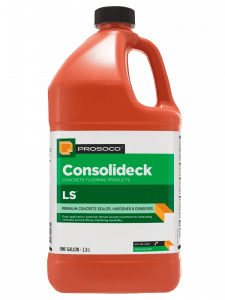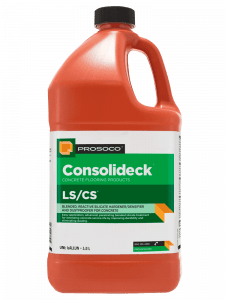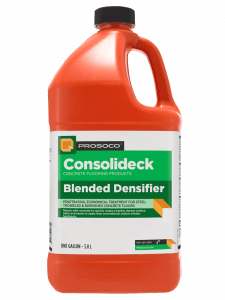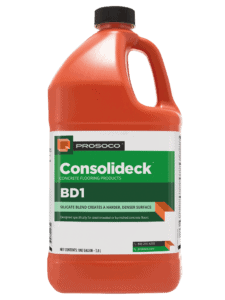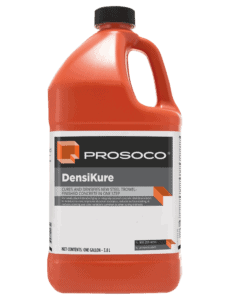As global demand for artificial intelligence, cloud computing, and digital services continues to skyrocket, data centers are becoming the backbone of nearly every industry. In fact, big tech companies are projected to invest more than $320 billion in AI infrastructure this year alone—a massive outlay that underscores the importance of protecting these high-value environments from preventable risks like electrostatic discharge (ESD) and moisture intrusion.
In not only data centers but also manufacturing facilities, clean rooms, health care facilities, and laboratories, management of electrostatic discharge and moisture infiltration is a top priority.
Electrostatic discharge, although invisible, can have devastating effects on sensitive electronic components, leading to data corruption, equipment failure, and significant financial loss. At the same time, moisture in concrete floors can threaten the integrity of floor finishes and contribute to other costly building failures. That’s why the use of static-dissipative concrete densifiers—especially those tested to meet the ASTM F150 standard—is increasingly critical in building design and operations.
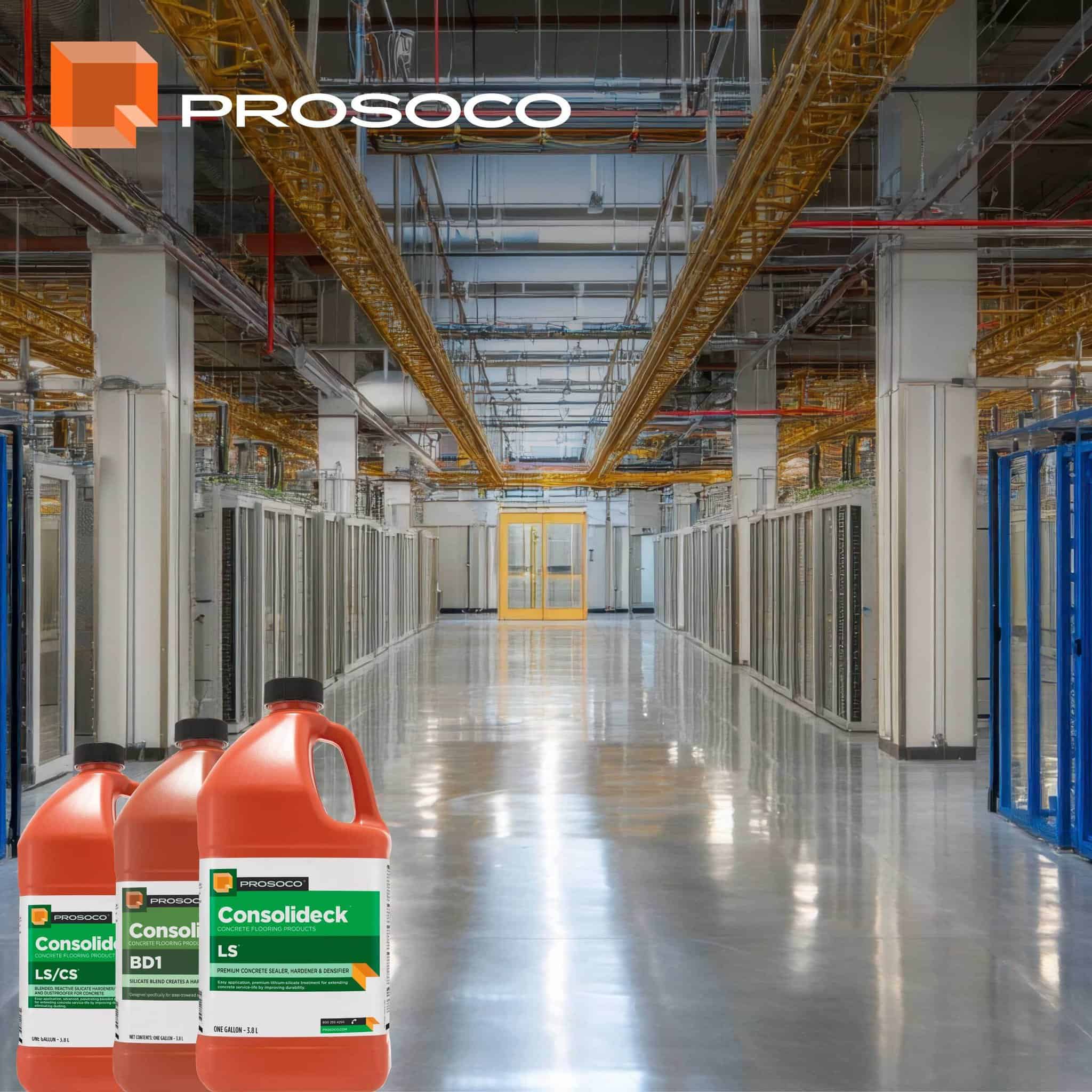
Why ASTM F150 Matters for Critical Infrastructure
In our increasingly data-driven economy, ASTM F150 is becoming more and more top of mind for many engineers, architects, contractors, consultants and specifiers involved in data center projects. The ASTM F150 Standard Test Method for Electrical Resistance of Conductive and Static Dissipative Resilient Flooring establishes criteria for how well a surface can safely dissipate static electricity. When a densifier or floor treatment passes this standard, it indicates that the treated surface will not allow dangerous levels of static to build up, while also preventing unwanted current spikes that could damage electronics.
ASTM F150 compliance helps mitigate those risks. Flooring systems and treatments that pass this standard play a crucial role in safeguarding critical infrastructure and ensuring uninterrupted uptime in facilities where a single electrical discharge could lead to major operational setbacks.
PROSOCO’s Lineup of ASTM F150-Compliant Densifiers
PROSOCO, a leading manufacturer of specialty construction products, offers several densifiers that pass the ASTM F150 standard. These products not only provide reliable ESD management, but also harden, densify, and protect concrete surfaces from dusting, abrasion, and moisture infiltration—key factors in preserving performance in mission-critical environments.
Here’s a look at PROSOCO’s lineup of ASTM F150-compliant densifiers and their unique advantages:
LS (Lithium Silicate)
PROSOCO's Consolideck LS is a premium concrete flooring sealer, hardener and densifier that improves performance, appearance, and light reflectance of new or old concrete. Surfaces treated with LS resist damage from water and surface abrasion, are easy to maintain and require no waxing. The increased surface hardness imparted by LS eliminates dusting and simplifies maintenance, producing a cleaner, healthier environment.
Application of LS is easy with one step, and involves no scrubbing, flushing or caustic wastewater. Its static-dissipative properties and ASTM F150 compliance make it an excellent choice for high-tech infrastructure, including AI-focused data centers.
LS/CS (Lithium Silicate/Calcium Silicate)
LS/CS is a penetrating silicate treatment that hardens, densifies, and dustproofs concrete flatwork. Preferred by many contractors for its ease of use, LS/CS does not have to be scrubbed or flushed, unlike many conventional hardeners. It simply sprays on the surface and is spread out with a microfiber pad.
Without triggering or contributing to surface alkali silicate reaction (ASR), LS/CS dustproofs freshly troweled “green” concrete, or existing floors of any age, and its compliance with ASTM F150 means it's safe for use in environments where controlling static is non-negotiable.
Blended Densifier
This economical and versatile product is designed specifically to harden and densify steel-troweled or burnished concrete floors. Blended Densifier reacts quickly with concrete to make floors harder, stronger, and easier to maintain. This densifier option from PROSOCO also can be burnished for a quick sheen.
Like LS and LS/CS, Blended Densifier passes ASTM F150, making it suitable for mission-critical environments, from server halls to clean rooms.
BD1
BD1 offers a blend of silicates specifically formulated and tested to provide superior performance on ASTM C-595 Blended Hydraulic Cements, including Type 1L Cement. It’s ideal for use on steel-troweled, burnished, freshly troweled, or existing floors of any age. Its dustproofing and static-dissipative capabilities ensure continued protection in sensitive environments.
BD1 is especially well-suited to retrofit projects in data centers or production areas housing delicate instrumentation.
DensiKure
DensiKure offers a powerful combination that enables it to cure and densify new concrete in one step. Ideal on newly placed, smooth, and steel-trowel-finished concrete, DensiKure combines hardening properties with a temporary organic film that applies easily onto the surface with a pump-up sprayer and dries in about 60 minutes, while meeting the ASTM F150 requirement for static dissipation.
Building the Future of AI, Safely
As companies race to develop and deploy advanced AI technologies, the reliability and resilience of supporting infrastructure has become paramount. With more than $320 billion in AI infrastructure investments forecasted this year alone, the stakes are higher than ever for ensuring these facilities are protected from subtle but significant risks like ESD and moisture.
Using concrete densifiers that pass ASTM F150 is a strategic move toward this goal. These products support safer, more durable, and more efficient environments by combining high-performance surface hardening with proven electrostatic protection.
In these types of buildings, ensuring the safety and performance of the concrete beneath our feet is a small detail with massive implications. With the right densifier system, owners, engineers, and designers can confidently meet the demands of today—and tomorrow.
![]()
